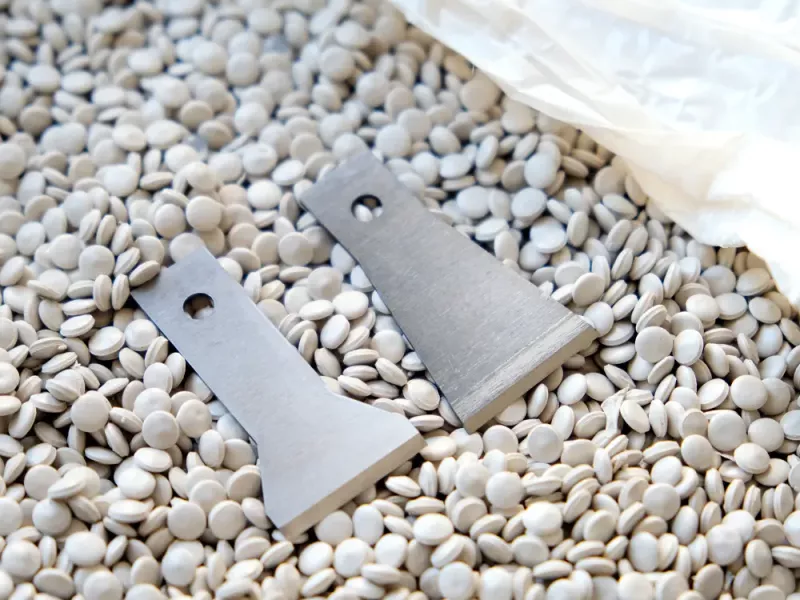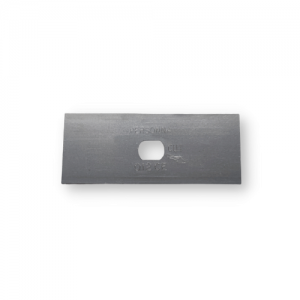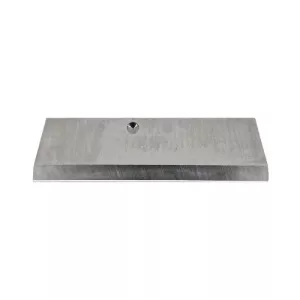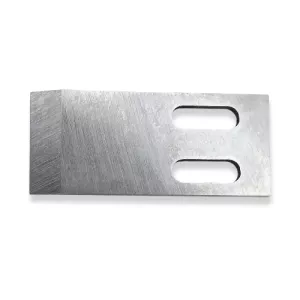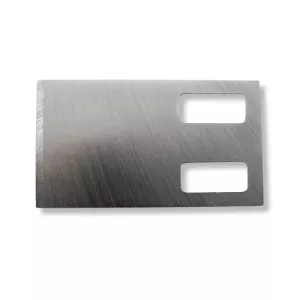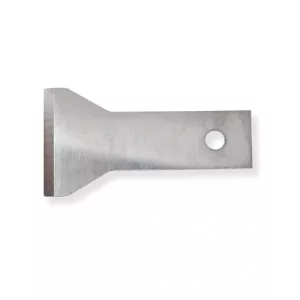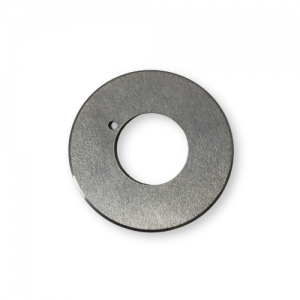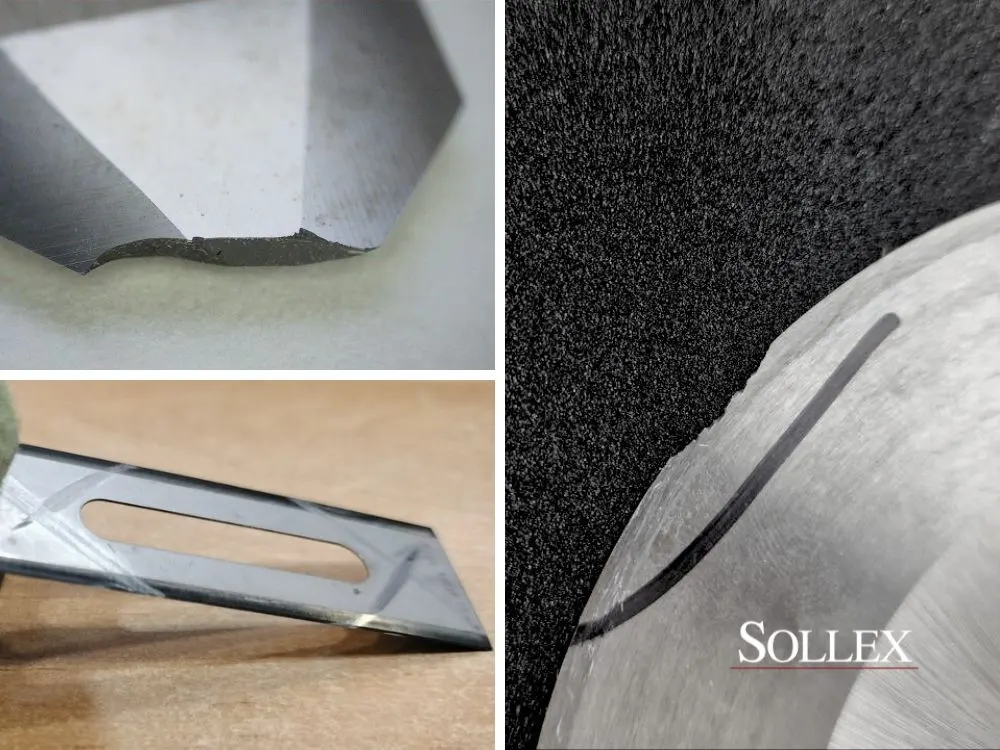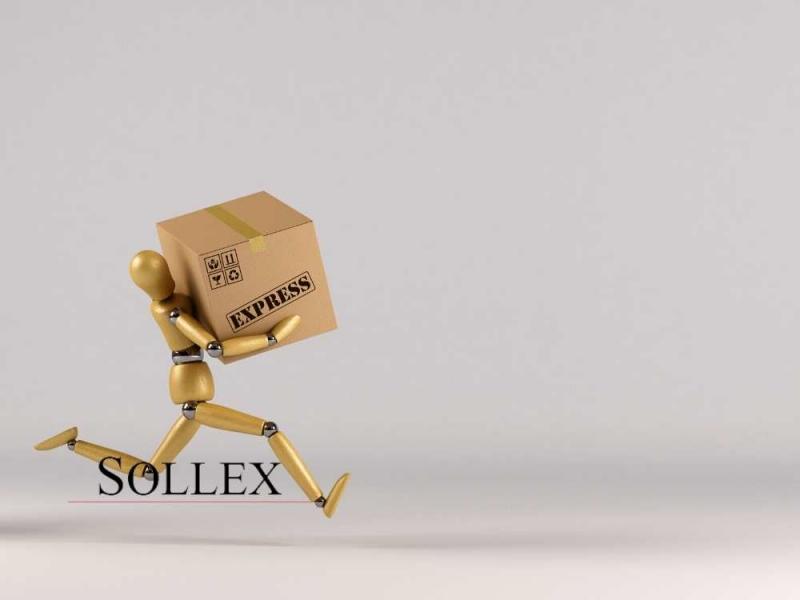One-Sided Machine Knife for Industrial Cutting [GUIDE]
Learn when to choose a one-sided machine knife for industrial cutting
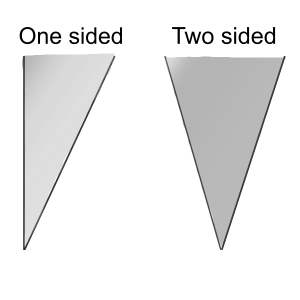 This article will shed light on the features and advantages of cutting with one-sided machine knives and help you make the right choice for your industrial application. Also in this article you will find 3 cases where we recommend the use of one sided industrial knives and blades. In addition, we offer 5 ways to make cleaner cuts.
This article will shed light on the features and advantages of cutting with one-sided machine knives and help you make the right choice for your industrial application. Also in this article you will find 3 cases where we recommend the use of one sided industrial knives and blades. In addition, we offer 5 ways to make cleaner cuts.
Content:
- One-sided blade design
- 3 occasions when you should use a ”one-sided” machine blade
- 3 problems when using a single-sided industrial knife
- 5 ways for cleaner cuts when using a one-sided knife
One-Sided Blade Design
Machine blade design is essential for industrial cutting and slitting. Most industrial blades are grinded on both sides so that the material is cut or slit along the thin cutting edge in the middle of the knife. This gives the impression that the slitting blade slides through the material as the cutting edge pressures the material in two and the сut material is "pushed" away on both sides.
With this in mind, it may seem strange to use machine knives that are sharpened only on one side. One-sided industrial knives are grounded so that only one side has a cutting edge, leaving the other side flat. A double-sided blade pushes material from both sides. One-sided or also sometimes called single-sided machine knives press out the same amount of material, but only on one side.
As a single-sided knife pushes material from one side only. This means that it takes more time and force for a one-sided slitter blade to go through the material. As all material is pushed from one side, more space is required to dispose of the cut material. If there is no such space, a one-sided knife will produce heat. With no material space and heat the cut material might melt. The melted material may eventually stick to the knife, completely disrupting the slitting process.
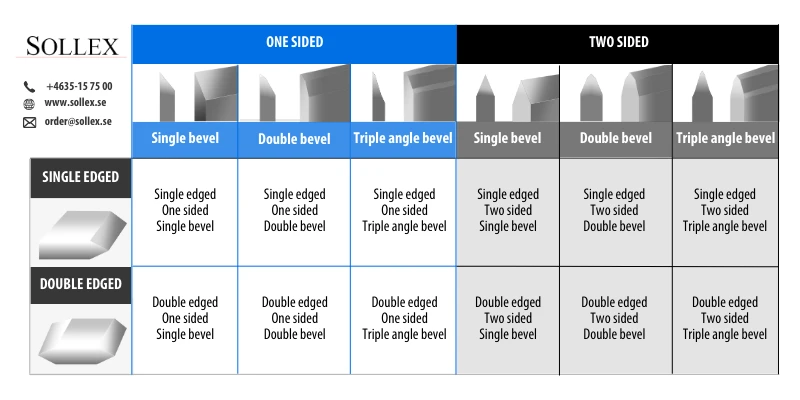
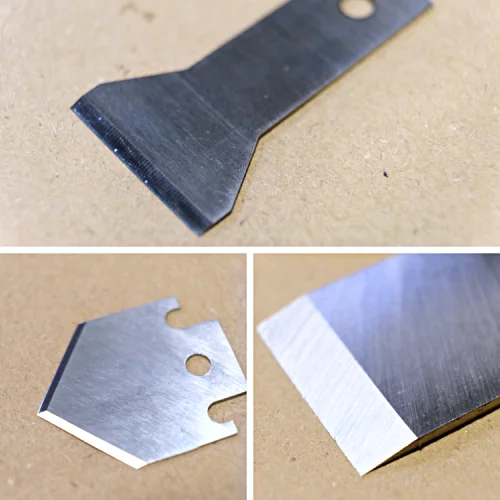 But the beauty of a single sided knife is that, when used correctly, the flat side provides a better and cleaner cut then the two sided blade design. The main advantage of a one-sided industrial cutter knife is that it is very sharp. This is because it is easier to sharpen a much smaller angle, which means a sharper knife. The one-sided design creates an overall sharper cutting edge, which makes it easier to re-sharpen and allows for a perfect surface when cutting with a one-sided knife.
But the beauty of a single sided knife is that, when used correctly, the flat side provides a better and cleaner cut then the two sided blade design. The main advantage of a one-sided industrial cutter knife is that it is very sharp. This is because it is easier to sharpen a much smaller angle, which means a sharper knife. The one-sided design creates an overall sharper cutting edge, which makes it easier to re-sharpen and allows for a perfect surface when cutting with a one-sided knife.
In general, a one-sided slitter knife is a good choice when you need to make a clean cut in soft materials.
Examples of one-sided machine knives used in industrial production:
- top dished-shaped / disc circular slitting knives for cutting a wide range of materials, used in conjunction with a bottom knife;
- pelletizing knives for the production of plastic pellets in a pelletizer, e.g. from Erema;
- guillotine knives also known as cut-off knives, roll splitters;
- granulator blades used to shred plastic into smaller pieces for recycling;
- circular slitting machine knives for cutting plastic film, rubber, cardboard, textile.
3 Occasions When You Should Use a ”One-Sided” Machine Blade
"One sided" industrial slitting knives and blades are really only used in three situations:
- When you have a bottom knife or a resistance on the other side of the blade.
- When you can hold the material from one side and "scrape" it as you cut.
- When you want to cut soft materials and have space for the removed material.
Please note that if your application is not one of the three above, you are probably not using the most appropriate blade for your application. Based on our experience, we have identified three types of cutting where the one-sided machine blade design is applicable. Here is a summary of the three different scenarios where one sided or "single sided" industrial blades are optimal.
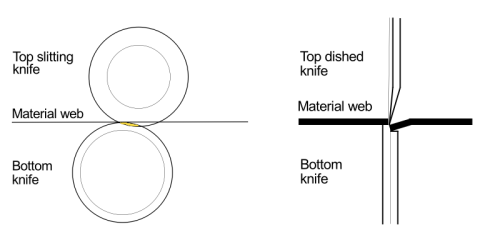 1. When there is a bottom knife or resistance on the other side
1. When there is a bottom knife or resistance on the other side
A synchronized pair of top and bottom knives when shear slitting can cut a wide variety of materials with great efficiency and durability. The bottom blade holds the material and the top blade moves for cutting. It also has a self-sharpening mechanism that keeps the cutting blades sharp until they need to be resharpened.
Without a bottom knife or resistance to hold the material in place, most single sided top knives would be useless. Both top and bottom slitter knives are used in a wide variety of applications - from slitting thin plastic film and metal foil, packaging, to shearing thick and abrasive roofing felt. Industrial razor blades provide a much better quality of cut, but for durability when working with abrasive materials, the motorized top and bottom slitter pair is unbeatable as you spread the cut over a long cutting edge.
2. When you can fix the material from one side and ”scrape it” along a plane
 Melted materials, tubes or rings made of soft material or polymer that require excellent cut quality, or other materials that can be properly fixed, are cut very well with "one-sided" knives. Again, we are talking about soft materials where the knife design strongly shapes the material.
Melted materials, tubes or rings made of soft material or polymer that require excellent cut quality, or other materials that can be properly fixed, are cut very well with "one-sided" knives. Again, we are talking about soft materials where the knife design strongly shapes the material.
Pelletizing or plastic pellet production is a good example of cutting soft melted polymer material that is forced through a die or matrix in a pelletizing machine to a one-sided pelletizer knife cuts it. In this case, the pelletizer cutter knife acts like a scraper, making a thin cut that squeezes all the material out of the die and leaves a clean surface for the next pellet to be cut.
Pelletizing, or the production of plastic resin pellets, is a good example of the cutting of a soft polymer material that is forced through the matrix or die in a pelletizer machine and is cut by a one-sided pelletizing knife.
When cutting rings, tubies or cables, the same technique is used as in pelletizing. Suppose a ring, tube or cable is secured on one side in a 360 degree holder. If you run the blade on one side along the holder, you can get a very clean cut. The ring, tube or cable is scraped off and the cut is very smooth on the flat side.
3. When you want to slit soft end materials and have space for the removed materials
Food products such as sushi, fish and soft vegetables are sometimes cut with one-sided knives in Japan. The same theory applies here, as the flat side gives a clean cut and the ground side repels all materials. In an industrial application, this is hard to imagine. We believe it is applicable if you are cutting a tiny piece of end material around the edges to even out the edges for example.
3 Problems When Using a Single-Sided Industrial Knife
Of course not all machine knives function and produce the results expected. In our experience, such problems are most often encountered when a single-sided grinded machine knife is installed in the cutter.
Problem 1. Too sharp
A one-sided machine knife or blade may be too sharp for your application. This means that the cutting edge does not fix the material and it simply moves or the edge breaks off in clips. Consider fixing the material, using a bottom knife or a two sided machine knife.
Problem 2. Backside not as smooth as the flat side
In general, the flat side of the one-sided industrial blade provides a very clean cut. The grinded side pushes all the material away. Depending on how much material that is pushed away and how much room there is to remove it, the back side can be destroyed if it is pressed against material. Consider switching to a double-sided cutting knife.
Problem 3. Heat - melted glue
If there is no space for the material to be cut and all the material is pushed to one side, the knife becomes hot. The heat can melt the material and stick to the knife like glue. This glued area will cause a lot of friction when the cutting material is cut with the machine blade.
5 Ways for Cleaner Cuts when using a One-Sided Knife
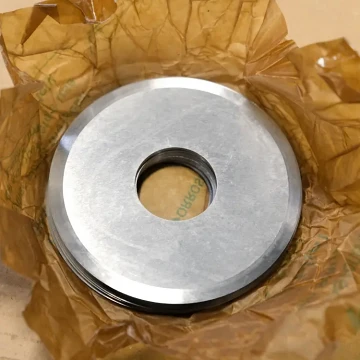 There are five things you can do to improve the cleanliness performance when cutting materials with your single-sided knife or blade:
There are five things you can do to improve the cleanliness performance when cutting materials with your single-sided knife or blade:
1. Spray a mist of oil on the cutting edge and side of the blade
Spraying a small mist of sewing machine oil or a very thin olive oil on the cutting edge can create less friction as the blade cuts through the material. This makes sense from a deep tribological perspective.
2. Use coatings to create a smoother cutting edge of the slitter blade
Industrial coatings have a major impact on the durability and performance of a blade's edge, its surface structure and its friction against the material being cut. Basically, it protects the edge so it lasts longer. But it also completely changes the surface topology of the blade. This can be useful for one-sided blades that want to minimize friction in their cut. Learn more about Sollex coating of industrial blades here.
3. Grinding a tiny phase on the flat side
We have empirical findings that a small tine phase grinded on the blades back side gets the one sided blade even sharper. Hence it can penetrate the material even smoother than the strict one sided blade.
4. Using a longer blade
When using a one-sided blade you need more force to penetrate and cut the material. Hence a longer than normal blade can spread the cutting force on a longer cutting edge, resulting in a better cut than when just using a sawing ”back and forward” technique.
5. Using the correct 45 degree attack angle
Similar to cutting with a two sided blade a 45 degree attack angle is optimal against most materials.
Summary
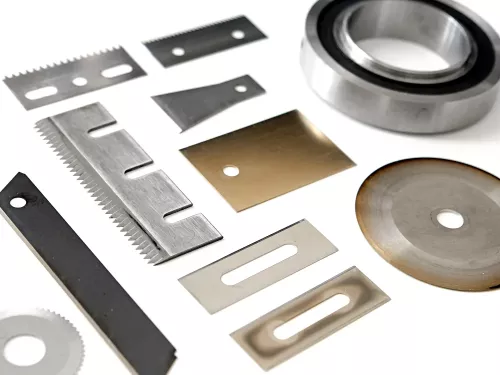 Both single- and double-sided grinded knives are used for industrial cutting. One-sided machine knives and blades have a variety of advantages and are recommended for industrial applications in a number of cases, such as:
Both single- and double-sided grinded knives are used for industrial cutting. One-sided machine knives and blades have a variety of advantages and are recommended for industrial applications in a number of cases, such as:
- when paired with a bottom knife in the case of slitting and when there is a resistance force on the back side of the blade;
- when the industrial knife acts as a scraper, such as in the case of plastic pellet production;
- when slitting soft material, e.g. along the edges, and there is room to retract the cut pieces to the sides.
Selecting the right machine knife for your application, solving cutting problems and adapting the knife, as well as a number of possible improvements to the machine knife itself and to the cutting settings, will give you the best results when cutting with a one-sided machine knife.
If you need advice or development of the right industrial knife for your business, Sollex is always happy to help you with this. We have extensive experience in manufacturing machine knives for manufacturers of packaging, cardboard, paper, plastic film, rubber, fabric. Contact us by phone or email order@sollex.se +46 35-157500.

